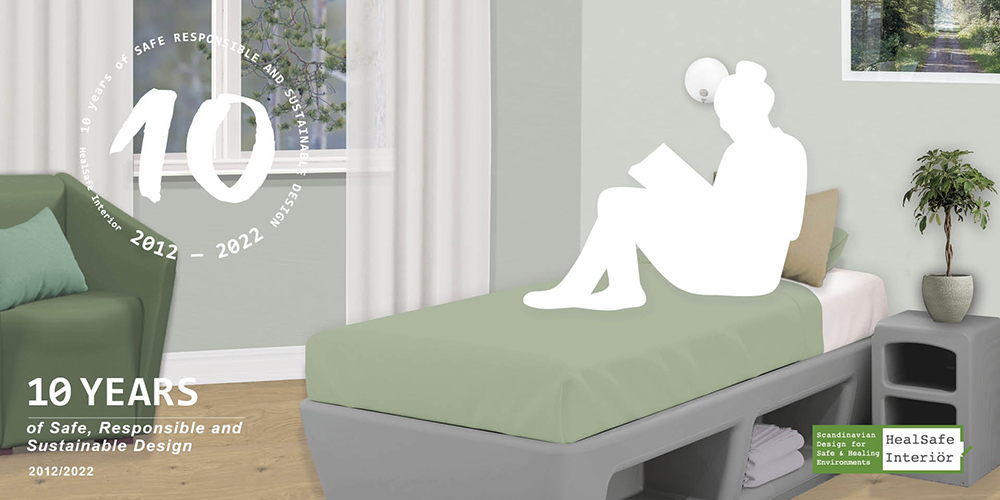“If we design a hospital or a prison in a certain way, instead of another, is there any scientific evidence of what sort of outcomes we would get?”
This is our 5th concept – EVIDENCE BASED DESIGN – in our series of a total of 10 concepts that we highlight during our 10th anniversary.
———————————————————
EVIDENCE BASED DESIGN
If we design a hospital or a prison in a certain way, instead of another, is there any scientific evidence of what sort of outcomes we would get? According to Evidence Based Design (EBD), there can be positive outcomes in patient and client’s recovery and wellbeing, if we design according to a number of principals*.
Evidence Based Design (EBD) is described by Stichler and Hamilton as, “…the process of integrating the best research evidence, clinical and design experience, and client (patient, staff, hospital, and community) values to guide healthcare design decisions.” (Design, 2016). EBD is based on Evidence based medicine; however, the idea is not that the architecture per se can heal but the architectural design can support and promote healing and the process of recovery. The most noticeable EBD-changeover for patients today is single rooms with private bathrooms (Andersson, 2013; Ulrich, 2012).
Roger S. Ulrich, PhD, former professor of Architecture at the Center for Healthcare Building Research (CVA) at Chalmers University of Technology is one of the most cited researchers on the effect of the physical environment in care environments. In 1984 Ulrich’s ground breaking study “View through a Window May Influence Recovery from Surgery” was published (Ulrich, 1984). The study measured data from 1971 to 1981 on randomized groups of patients who had undergone surgical removal of the gallbladder. The results showed that the patients with tree-view used lesser pain killers, rated higher in satisfaction, and had shorter postoperative hospital stays than the “wall-view patients”. To lower stress (cortisol levels) through visual, visceral, sound or olfactory senses is one of the main variables of these studies, but also use of medicine or number of times restraints are used. Altogether, examples of the most significant findings, related to EBD (Ulrich, Bogren, & Lundin, 2012), other qualitative research and Best Knowledge are listed below:
- A GREEN VIEW – is related to autonomy and the possibility to open blinds or curtains to take part of the view.*
- AUTONOMY – the possibility for an individual to decide interior issues for themselves, for instance, temperature, or the amount of daylight that is desirable for the person who stays there.*
- LOW NOICE – good acoustics.*
- NATURE ART – no abstract art.*
Other findings from research are, for instance, the importance to provide a high quality of sleep, and moveable furniture to suit personal needs of the interior design (James, 2018). To be able to store and hang your clothes or to have a comfortable bed mattresses as the patients spend many hours in their beds (Olausson, Danielson, Berglund Johansson, & Wijk, 2018).
EBD has made a strong contribution to research by bringing forward the discussion of the physical environment’s role in health care. This has not only contributed to increased research in the field of design and health but hopefully also to a better process and knowledge whendesigning new facilities. EBD is well established in USA and has currently received much interest in Scandinavia as well.
We at HealSafe Interiör base our work on what there is scientific evidence for, but most importantly on best knowledge and user and staff experience.
———————————————————
Download text in Swedish – LINK
Download text in English – LINK
READ MORE:
References:
Design, T. C. f. H. (2016). EDAC: EVIDENCE-BASED DESIGN ACCREDITATION AND CERTIFICATION. Retrieved from https://www.healthdesign.org/certification-outreach/edac/about
James, F. (2018). “It’s important to not lose myself” Beds, Carceral Design and Women’s Everyday Life within Prison Cells. In E. Fransson, F. Giofrè, & B. Johnsen (Eds.), Prison Architecture and Humans. Postboks 1900, 0055 Oslo, Norway: Nordic Open Access Scholarly Publishing (NOASP), Cappelen Damm Akademisk.
Olausson, S., Danielson, E., Berglund Johansson, I., & Wijk, H. (2018). The meanings of place and space in forensic psychiatric care – A qualitative study reflecting patients’ point of view. International Journal Of Mental Health Nursing, 2018. doi:DOI: https://doi.org/ https://doi.org/10.1111/inm.12557
Ulrich, R. S. (1984). View through a window may influence recovery from surgery. Science, new series, 224(4647), 420-421. Retrieved from http://www.majorhospitalfoundation.org/pdfs/View%20Through%20a%20Window.pdf
Ulrich, R. S., Bogren, L., & Lundin, S. (2012). Toward a design theory for reducing agression in psychiatric facilities. Paper presented at the ARCH 12: Architecture/RESEARCH/CARE/HEALTH, GOTHENBURG, CHALMERS.


